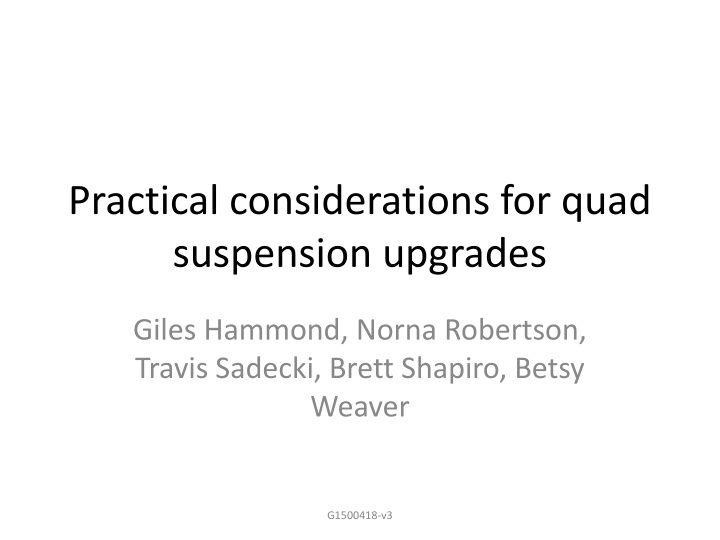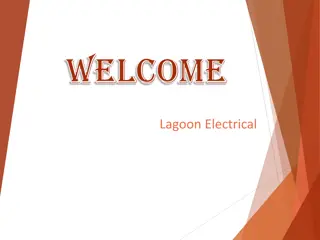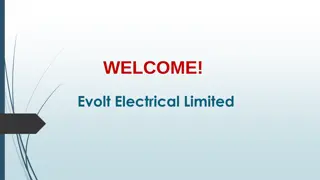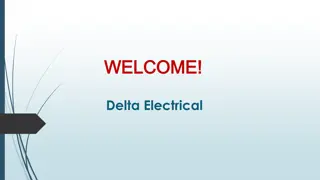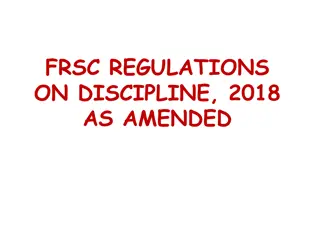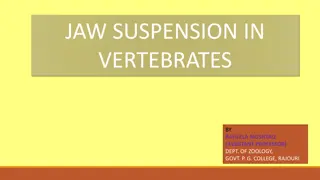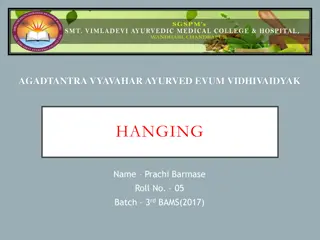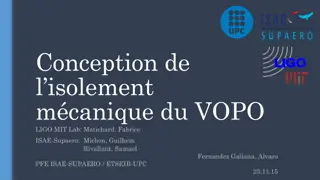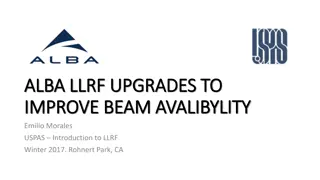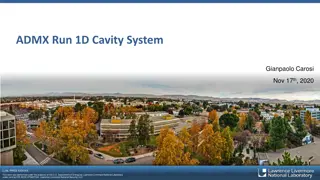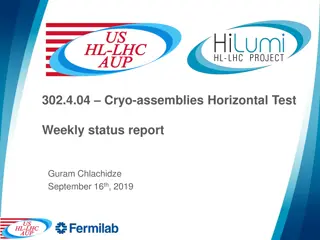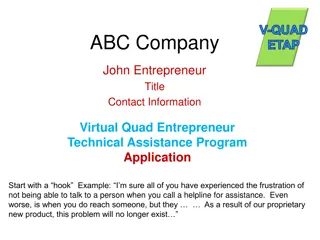Practical Considerations for Quad Suspension Upgrades
This note compiles thoughts on building, installing, and maintaining upgrades to aLIGO suspensions, considering warm and cryogenic configurations. Details include considerations for suspension tilt, cartridge installation, cryogenic SUS upgrades, thermal drifts, and more.
Download Presentation

Please find below an Image/Link to download the presentation.
The content on the website is provided AS IS for your information and personal use only. It may not be sold, licensed, or shared on other websites without obtaining consent from the author.If you encounter any issues during the download, it is possible that the publisher has removed the file from their server.
You are allowed to download the files provided on this website for personal or commercial use, subject to the condition that they are used lawfully. All files are the property of their respective owners.
The content on the website is provided AS IS for your information and personal use only. It may not be sold, licensed, or shared on other websites without obtaining consent from the author.
E N D
Presentation Transcript
Practical considerations for quad suspension upgrades Giles Hammond, Norna Robertson, Travis Sadecki, Brett Shapiro, Betsy Weaver G1500418-v3
Purpose This note is intended to compile thoughts on building, installing, and maintaining upgrades to aLIGO suspensions. We had in mind the upgrade configurations proposed in G1500233 and G1500246, both warm and cryogenic respectively. This came out of discussions at the March 2015 LVC in Pasadena. 2
To be considered for all SUS upgrades long enough we may need to tilt lower SUS through door on the way in. See Figure 1. Cartridge install is topped out in both weight and height - For quads longer than in aLIGO the lower part needs to go through door. If the fibers are Center the SUS on optics table (as much as possible, Dennis Coyne says there is a scattered light peak there) in order to allow for larger suspension payloads. Off-center suspensions require the ISI to leave payload for balancing trim mass. We should consider minimizing the amount of balancing and alignment work of the quad outside the vacuum. Precision alignment has to be done inside the BSC anyway, whether or not it is done on the outside. Make sure everything in the cartridge install (ISI and upper quad) is within the footprint of the aLIGO stage 0 so that it fits through the top of the BSC. 3
To be considered for cryogenic SUS upgrades - Ref: G1500246-v2 See Figs 2-4. To make room in the BSC during assembly and maintenance the beam tube shield pushes into beam tube. The Arm Cavity Baffle (ACB) is normally attached to the heat shield around the suspension. The ACB unbolts from the SUS heat shield and pushes into beam tube shield for storage. Cryo suspension assembly procedure outline assuming long fibers: - The cartridge install will involve bringing in the ISI and upper part of the quad through the top of the BSC. - Bring in lower structure through the door. Reminder: at LASTI the lower part of the aLIGO quad noise prototype went through the door. - Attach lower structure to upper with lower-upper structure stops/limiters. Make sure they are locked. See Figs 5-6. - After suspending the quad, bolt on heat shield panels - Bolt on arm cavity baffle to heat shield - Attach heat shield to its stage 0 springs - Suspend and balance heat shield / lower structure - Line up the beam tube shield with the heat shield / lower quad structure. Take into account the temperature of the reaction chain cables inside the heat shield. 4
Consider thermal drifts - EQ stops: maybe we want peizo motors and sensors at every stop in the cold part to measure and adjust the gaps from outside the chamber. Giles suggested an inch-worm motor for the stops. Sensor resolution could be as bad as 100 microns. - The silicon fibers will change length. - Any springs on a cryogenic PUM will move vertically during the cool-down. - The warm springs in the upper quad may need heaters to control their heights. - The sensors / actuators in the cold part will behave differently when cold. OSEM sensors are probably no good because of the LED and photodiodes. Coil actuators will work, but we must take into account that the resistance of the cool will decrease when cold. - The reaction chain and main chain should maintain good alignment during cool down - Don t forget that some non-magnetic metals become magnetic when cold. - Orient lower structure-to-upper structure lockers so that they are insensitive to thermal contraction of the structure. See Fig. 6. If Si fiber strength can t be made high enough we will probably need Si springs at the PUM to get low frequency performance. EQ stop viton pads need to go away because viton becomes hard and brittle when cold. We ll have to find a different material or approach to cushion the optic. 5
Vibration absorbers for the quad structure in the cold part can t use Viton because it is not lossy when cold. However, eddy current damping becomes much better. Perhaps a cryogenic vibration absorber can be eddy current damping based. Magnets will be OK because they are on the heat shield, not the SUS or ISI. How big of a hole do we need in the shield for the transmitted beam at the ETMs? Do we need a Transmon SUS, or if so, should we think about putting it inside the heat shield so we don t need another hole? How big of a hole do we need for the beam to enter the shield for the ITMs? How do the Oplevs get around the beam tube shield at the end stations? At the corner station, looks like they can just go through the open end using the aLIGO setup since it will likely be beyond the beam tube shield. What is the BRDF of the black heat shield coatings at both the laser wavelength and room temperature radiation wavelengths? This is important for estimating the heat shield scattering of laser light and of warm beam tube radiation. 6
Figure 1 Quad Suspension Install If quad upgrades are longer than aLIGO, they will be too long for a cartridge install. The lower part of the SUS will have to go through the door, which has a dia of 1536 mm. For long fibers, we may need to tilt the lower suspension on its way in. BSC Lower SUS 7
Fig 2: Heat shield in operation The upper quad structure (aka upper cage) is room temperature and physically separate from the cold lower structure (aka lower cage). The lower structure is part of the heat shield and arm cavity baffle (ACB) which are suspended from stage 0 and actively controlled to follow stage 2 for good seismic isolation. The heat shield consists of Cu or Al panels that bolt onto the lower structure and are cooled by a cold link. The beam tube also includes a heat shield. Room temp upper structure, disconnected from cold lower Cold link Stage 2 St0 St0 80 K baffled beam tube shield Telescoping heat shield section Gate Valve Gate Valve z 80 K heat shield 80 K lower structure ACB in suspended HS
Fig 3: Heat shield during SUS work Arm cavity baffle and leading section of the beam tube shield are pushed into the beam tube. It is helpful to the SUS team to have a place to put these inside the chamber during maintenance. Heat shield panels around lower quad are removed from the lower structure (or lower cage). Perhaps we can find a place to put these in the chamber as well (hang them up on the BSC wall?). Room temp upper structure, disconnected from cold lower Cold link Stage 2 St0 St0 80 K baffled beam tube shield Telescoping heat shield section Gate Valve Gate Valve z lower structure ACB in suspended HS
Fig 4: Cryogenic End Station Conceptual Model Gate valve Gate valve ISI Stage 0 Transmitted beam shield Cryo pump, cools this section of shield, and maybe everything else Arm Cavity Baffle integrated with suspended heat shield, 80 K Suspended heat shield / lower quad structure 80 K Beam tube shield mounted to beam tube, 80 K 10
Fig 5: BSC ISI Stage 0-1 lockers - D1000854 Something like this could be used to limit the suspended heat shield / lower quad structure range of motion. The design makes it impossible for the suspension to fall in the event of a wire or spring failure. Each locker constrains only 2 (I think) DOFs: vertical and left-right looking at the side view on the top left. Stage 1 Stage 0 11
Fig 6: Possible arrangement of lower-structure-to-upper-structure lockers considering thermal contraction Warm dimensions Cold dimensions Top view of lower structure (square cross-section). Thermal contraction occurs along an unconstrained DOF of the lockers, for a spatially uniform lower structure temperature. The clearance in the lockers will set a requirement on the maximum thermal gradient in the structure. 12
